Author: everbella
The Top 9 Hydrating Foods For Healthy Skin
We all know that staying hydrated is important for our health, but what you may not know is that the foods you eat play a role in keeping you hydrated too!
In today’s blog post, I’ll cover the top nine hydrating foods and how they help support healthy skin. So if you’re looking for ways to give your skin an extra boost, be sure to add these foods to your diet!
The Importance Of Hydration For Healthy Skin
Staying hydrated is essential for keeping your skin looking its best.
When you’re properly hydrated, your skin is better able to fight off the effects of aging, like fine lines and wrinkles. Hydrated skin appears plumper and is less likely to develop these creases. This is because moisture helps to fill in the spaces between cells, giving the skin a smoother appearance.
Moisturized skin is also better able to defend itself against damage from environmental factors like UV exposure and pollution, and can efficiently heal wounds and fight infection.
When the body is dehydrated, it starts to pull moisture from the skin, causing it to become dry and loose. This can lead to the formation of fine lines and wrinkles, as well as an overall loss of elasticity.
Staying hydrated also helps to flush out toxins that can cause breakouts.
So, if you’re wondering how to keep your skin looking its best, make sure you’re drinking plenty of water every day. But also consider adding a few of the following foods to your grocery list…
The Top 9 Hydrating Foods
Luckily for us, plenty of foods out there are not only delicious, they contain tons of water that can help keep you – and your skin – hydrated and happy!
Here are the top nine:
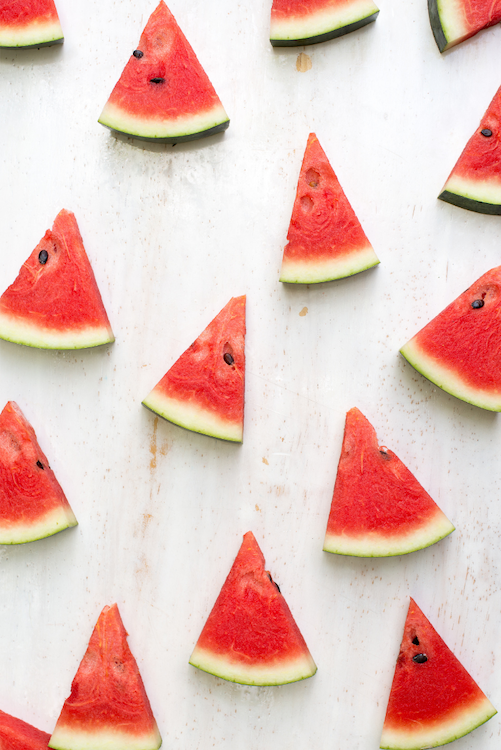
Watermelon – This juicy fruit is made up of 92% water, making it a great choice for hydration. Watermelon is also rich in antioxidants and vitamins A and C, which are important for skin health.
Cucumber – Like watermelon, cucumbers are made up of 92% water. They’re also a good source of vitamins K and C, both of which are important for healthy skin.
Strawberries – These sweet berries are 91% water and are also a good source of vitamin C.
Cantaloupe – This melon is 90% water and is rich in vitamins A and C.
Peaches – Peaches are 88% water and are also a good source of vitamins A and C.
Oranges – Oranges are 86% water and contain high levels of vitamin C.
Grapefruit – Grapefruits are 85% water and are another good source of vitamin C.
Lemons – Lemons are 88% water and are rich in citric acid, which can help to brighten the skin.
Tomatoes – Tomatoes are 94% water and contain lycopene, an antioxidant that can help to protect the skin from damage.
So, there you have it! The top nine hydrating foods for healthy skin. Be sure to add these to your diet if you’re looking for ways to keep your skin looking its best.
Incorporating these into your day is easier than you think!
Watermelon, cucumber, and cantaloupe make for a refreshing summertime snack or light lunch. Add them to a fruit salad or enjoy them on their own.
Peaches, strawberries, and grapes are perfect additions to breakfast bowls or yogurt. Oranges, grapefruits, and lemons can be enjoyed as-is or added to water or smoothies for an extra boost of flavor.
Tomatoes can be eaten raw, in a salad, or cooked into your favorite recipes.
So, if you’re looking for ways to keep your skin looking its best, be sure to eat these foods and drink plenty of water!
Bottom line
Staying hydrated doesn’t need to be just staying hyper focused on pounding back water all day. Incorporating yummy foods into your diet can make a huge difference as well. Especially in your skin.
Collagen can also help keep your skin plump and smooth.
This is because collagen is actually what makes up your skin!
To learn the BEST way to get collagen…
The Dangers Of UV Rays And How To Protect Yourself This Summer
The sun is out and it’s time to enjoy the warmer weather! But before you go outside and soak up those UV rays, there are a few things you should know. For example, UV radiation from the sun can be dangerous to your skin, causing everything from wrinkles to cancer.
In today’s article, I’ll cover how UV rays work, the dangers they pose, and some tips on how to protect yourself this summer (and for summers to come)!
What are UV Rays and what do they do to your skin?
Most people are aware that ultraviolet (UV) rays can be harmful to the skin, but they may not know exactly what UV rays are or how they work.
UV rays are a type of electromagnetic radiation that is invisible to the human eye. They are divided into three categories: UVA, UVB, and UVC.
UVA rays penetrate deeply into the skin and are responsible for premature aging and wrinkling. Unlike UVB rays, these types of rays can penetrate windows, so it’s important to be mindful of this if you’re by a window on a sunny day.
UVB rays are less intense, but they can still have an impact. These rays affect the skin in a number of ways, ranging from tanning and burning to premature aging and even skin cancer.
But you want a balance…
While overexposure to UVB rays is certainly dangerous, it is important to keep in mind that moderate exposure can actually be beneficial for the skin. For example, UVB rays enable the body to produce vitamin D, which is essential for healthy skin growth and development.
UVC rays are the most dangerous, but fortunately they are completely absorbed by the ozone layer and never reach the earth’s surface.
However, artificial sources of UVC rays, such as tanning beds and mercury-vapor lamps, can emit high levels of radiation. Exposure to UVC rays can cause premature skin aging, eye damage, and suppress the immune system. The risks associated with UVC exposure are especially high for infants and children, who have thinner skin and less developed immune systems. Fortunately, UVC exposure is rare and an uncommon issue for most people.
Regardless of their intensity, all UV rays can damage the skin and lead to health problems. That’s why it’s important to protect yourself from the sun by wearing sunscreen and covering up when possible.
The dangers of UV Rays
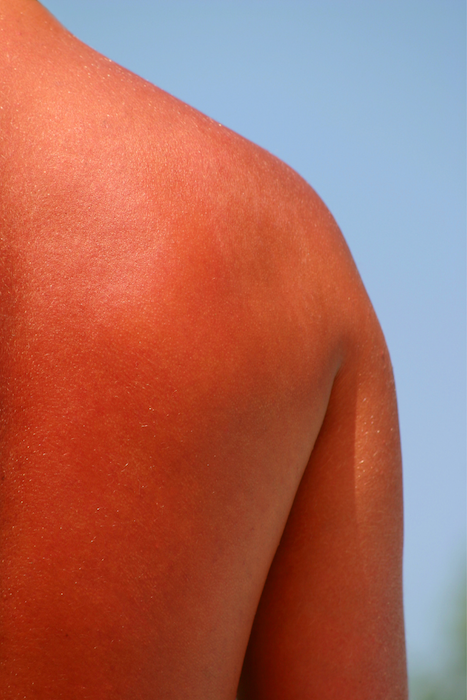
The dangers of UV rays are well-documented. These harmful rays come from the sun, as well as other sources such as tanning beds and ingredients in skin care products, and they can cause a range of health problems.
Long-term exposure to UV rays can even lead to skin cancer, among other serious conditions. But what many people may not realize is that even short-term exposure to these harmful rays can be dangerous too.
For example, getting a sunburn not only increases your risk of developing skin cancer later on, but also increases your chances of experiencing pain and discomfort in the short term. And since unprotected UV radiation can penetrate deep into the skin and damage cells in the body, even just a few minutes of sun exposure can be harmful to your health.
If you want to stay safe from UV rays, it’s important to always use sunscreen and other protective measures.
Whether you’re spending time outdoors or looking for skin care products, your best defense against these dangerous rays is knowledge and vigilance.
How to protect yourself from the sun
When it comes to protecting yourself from the sun’s harmful UV rays, there are a number of best practices that you can follow.
First and foremost, it’s recommended that you always wear sunscreen when going outside. This will help to prevent overexposure and reduce your risk of developing sunburns or other skin conditions.
You should also be sure to wear sunglasses and a hat when outdoors, as these can help to shield your eyes and face from the sun’s damaging rays.
Additionally, it’s important to take breaks inside whenever possible, especially during peak hours when the sunlight is strongest.
By taking simple precautions and using effective sun protection products, you can greatly reduce your risk of developing skin cancer and other health issues related to UV radiation exposure.
Sunscreen 101
Summer is almost here, and that means it’s time to break out the sunscreen! But with so many different products on the market, it can be hard to know which one is right for you. Here are some things to consider while shopping for sunscreen.
There are two main types of sunscreen: chemical and physical.
Chemical sunscreens work by absorbing UV rays, while physical sunscreens reflect them away from the skin. Both types are effective, but many people prefer physical sunscreens because they don’t usually contain chemicals that could potentially be harmful.
When choosing a sunscreen, it’s important to look for one that has an SPF of at least 30. And be sure to apply it generously. Most people only apply about 25% of the amount they should be using. And don’t forget to reapply every two hours, or more often if you’re sweating or swimming.
With these simple tips, you’ll be sure to enjoy a fun and safe summer in the sun!
Try a natural homemade sunscreen this summer
Alternatively, there are a number of simple ways to make your own natural sunscreen at home.
Ingredients like aloe vera gel, coconut oil, shea butter, beeswax, olive oil, zinc oxide, and vitamin E oil have powerful moisturizing and protective properties, making them ideal for use in sunscreen. These blends provide great sun protection without any harmful chemicals or additives.
I’ve provided an easy recipe you can make at home below. But whichever recipe you choose, just be sure to apply the sunscreen regularly throughout the day for maximum protection against harmful UV rays.
Natural sunscreen recipe
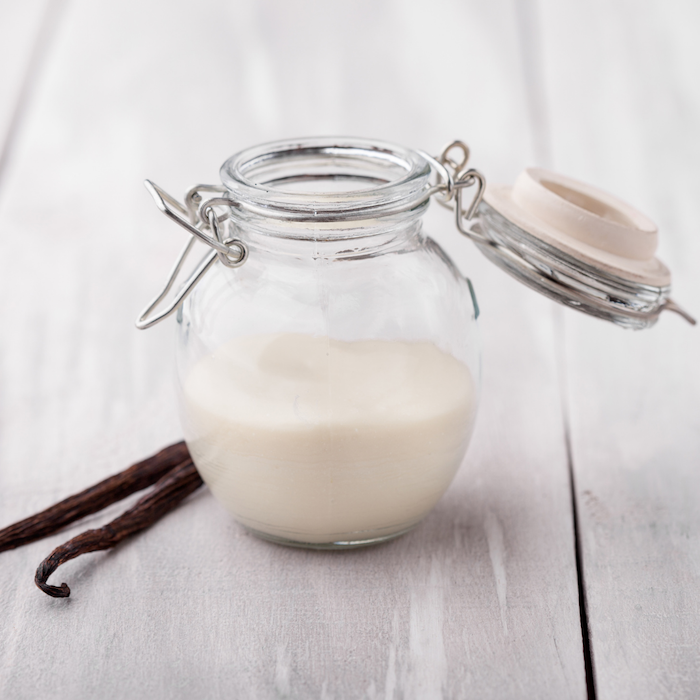
Here’s what you’ll need:
- 1/2 cup coconut oil
- 1/4 cup aloe vera gel
- 1 tbsp shea butter
- 2 tsp zinc oxide
Here’s what you’ll need to do:
- Combine coconut oil, aloe vera gel, and shea butter in a bowl and mix well.
- Add zinc oxide and mix until combined.
For best results, apply sunscreen generously to exposed skin and reapply every two hours.
Store in a cool, dry place.
The bottom line
Summertime is the perfect time to enjoy the outdoors and soak up some vitamin D from the sun.
But it’s important to remember that too much sun exposure can be dangerous for your skin. UV rays can cause sunburns, impact collagen levels, and increase your risk of developing skin cancer. That’s why it’s so important to take precautions and use sunscreen whenever you’re outdoors.
If you’re worried about the sun, but also want to make sure you’re getting enough vitamin D…
You don’t have to worry anymore.
Our friends over at Purality Health have a delicious, easy-to-take liquid vitamin D that’s designed to get absorbed and used by your body.
Like EverBella, it’s all-natural, and made with only the highest of standards.
They’ve also done the research to ensure it’s formulated properly.
For example, did you know that if you’re taking vitamin D, you NEED to be taking vitamin K?
Not doing so could be dangerous.
Keep yourself safe from harmful UV rays AND healthy with adequate vitamin D levels this summer with Purality Health’s Micelle Liposomal Vitamin D3.
>>> Click here to see ingredients, reviews, and how you can save up to 25% TODAY!
Glowing Skin Smoothie Recipe
There are so many different ways to enjoy eating healthy, delicious food. One of my favorite ways to get my daily dose of fruits and vegetables is by drinking a smoothie. Not only are smoothies a great way to pack in a ton of nutrients, but they’re also incredibly versatile and can be tailored to fit any dietary need or preference.
This means you can pick and choose ingredients that offer a lot of benefits for your skin. By drinking a smoothie packed full of these foods every day, you can help protect your skin from the damaging effects of free radicals, as well as keep it looking and feeling soft, supple, and healthy.
Looking to enjoy a delicious yet nutritious smoothie that is perfect for your skin health?
Then look no further than this Glowing Skin Smoothie Recipe!
This smoothie is loaded with antioxidant-rich fruits like blueberries and strawberries, as well as vitamin-rich vegetables like spinach and kale. And to give it a smooth, creamy texture, I’ve added in some Greek yogurt and avocado.
(In a minute, I’ll also go over why these ingredients can help your skin so much!)
Glowing Skin Smoothie Recipe
Making a smoothie for healthier skin is easy and can be tailored to fit any dietary need or preference. To get started, simply add the following ingredients to a blender and blend until smooth.
This recipe makes two servings, so if you only want one, simply cut the measurements in half!
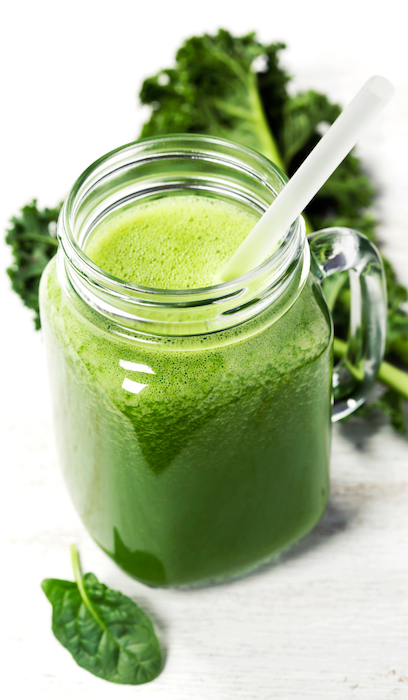
Here’s what you’ll need:
1/2 cup blueberries
1/2 cup strawberries
1/2 cup spinach
1/2 cup kale
1/2 cup Greek yogurt (a dairy-free option works too!)
1/2 avocado
1 tbsp Complete Collagen Plus
1 cup coconut water (or regular water)
Here’s what you’ll need to do:
Once you have all of your ingredients in the blender, simply blend until smooth!
If you find that the smoothie is too thick, you can add more water until it reaches the desired consistency. And if you want to sweeten it up a bit, feel free to add in a few drops of honey or maple syrup.
Enjoy this delicious and nutritious smoothie for a healthy snack that’s great for your skin!
Why these ingredients?
All of the ingredients in this smoothie contain nutrients and compounds that can benefit your skin and give it a nice glow!
Blueberries
Blueberries are a delicious, nutritious fruit that are prized for their high antioxidant content. They have long been celebrated for their ability to support heart health and improve cognitive function, but they can also play a major role in skin health.
The antioxidants in blueberries help to protect the body from oxidative stress and damage from free radicals. This can not only reduce the risk of premature aging, but it can also protect the skin from sunburn and reduce the appearance of wrinkles as well.
Whether you are looking to nourish your skin from the inside out or you are searching for a natural way to keep it healthy and glowing, blueberries should certainly be on your list of top choices!
Strawberries
Strawberries are not only delicious, but they can also support your skin health. Strawberries are rich in vitamin C, which is essential for the production of collagen – a protein that helps to keep the skin firm and elastic.
In addition, strawberries contain ellagic acid, an antioxidant that can help protect the skin from damage caused by ultraviolet radiation. Ellagic acid can also help reduce the appearance of wrinkles and fine lines.
As a result, regular consumption of strawberries may help to improve the complexion and overall health of your skin.
Spinach
While most people associate spinach with Popeye and strong muscles, this leafy green can also do wonders for your skin.
Spinach is packed with nutrients like vitamins A and C, which are essential for healthy skin. Vitamin A helps to repair and regenerate skin cells, while vitamin C boosts collagen production and protects against damage from free radicals.
In addition, spinach is a good source of antioxidants, which can help reduce inflammation and protect the skin from environmental stressors like UV rays.
Kale
Kale is not only a delicious and nutritious leafy green, but it also provides numerous benefits for the skin.
Kale is packed with vitamins and minerals, including vitamin C. This means that kale can help to reduce the appearance of fine lines and wrinkles.
In addition, the antioxidants in kale help to protect skin cells from damage. These nutrients also promote cell turnover, resulting in smoother, healthier skin.
On top of all this, kale is a good source of beta-carotene, which the body converts into vitamin A. Vitamin A is essential for maintaining the skin’s barrier function, which helps to keep the skin hydrated and prevents environmental damage.
Greek yogurt
There are plenty of benefits to incorporating greek yogurt into your diet, but one of the most important is its potential to support healthy skin.
Greek yogurt is rich in nutrients like calcium and protein, which both help strengthen the structural proteins in our skin.
Additionally, the probiotics found in greek yogurt can support the growth of good bacteria in our bodies, helping to keep harmful microorganisms that can irritate our skin at bay.
What’s more, certain compounds in greek yogurt may help to decrease inflammation and protect against sun damage.
Taken together, these factors make greek yogurt an ideal choice for anyone looking to promote glowing skin from the inside out. So if you’re looking for a way to nourish your complexion while also enjoying a tasty snack, look no further than this versatile dairy product!
Avocado
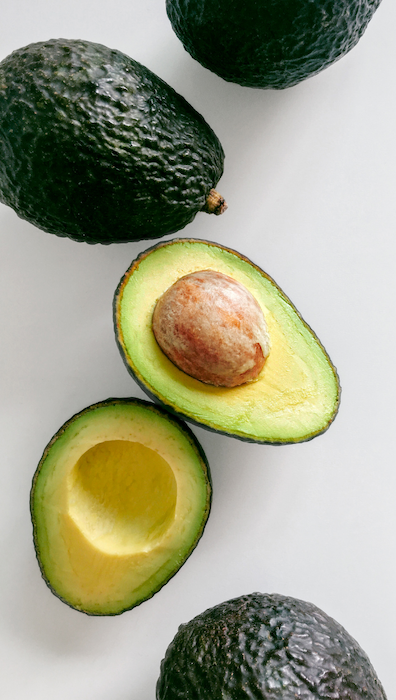
It’s no secret that avocados are packed with healthy fats and nutrients. But did you know that this amazing fruit can also do wonders for your skin?
Thanks to its high content of vitamins A, D, and E, as well as its natural oils, avocado can help to keep your skin soft and supple. It can also help to reduce the appearance of wrinkles and fine lines.
In addition, the antioxidants in avocado can help protect your skin. So if you’re looking for a way to support your skin health, reach for an avocado!
Collagen
If you’re looking to improve the health and appearance of your skin, collagen supplements may be just what you need.
Collagen is an essential substance for keeping skin soft and elastic, providing structure and support to connective tissues. It also plays an important role in protecting skin from UV damage, as well as improving moisture levels and reducing the appearance of wrinkles.
By incorporating collagen into your daily routine, you can help promote healthy, radiant skin that looks young and vibrant.
Coconut water
Coconut water has long been touted as a healthy beverage, and for good reason. The electrolytes in coconut water can help hydrate your skin, while the antioxidants can help protect your skin from damage.
In addition, coconut water can help to reduce inflammation and redness. This makes it an excellent choice for those who want to maintain healthy, glowing skin. So next time you reach for a refreshing beverage, consider coconut water! Your skin will thank you.
Tips for a delicious smoothie every time
There are a few tips and tricks that you can use to help ensure that your smoothies are perfect every time. Here are a few of my favorites:
1. Make sure to use fresh, ripe fruit. Frozen options can help keep the smoothie refreshingly cold.
2. Use a quality blender that can handle ice and hard fruits and vegetables.
3. Add yogurt or avocado to make your smoothie creamier and balance out the sugars from the fruit.
4. Use more water or juice to thin out your smoothie if it’s too thick.
5. Add a sweetener like honey or maple syrup if you want a sweeter smoothie.
6. Experiment with different fruits, vegetables, and add-ins to find your ideal smoothie recipe!
Enjoy!
I hope you enjoyed this Glowing Skin Smoothie Recipe!
Remember, if you’re getting low on Complete Collagen Plus, you can simply sign up for our Loyalty Club and save EVERY month while not having to worry about running out ever again!
You also get a bunch of other goodies!
>>> Click here to learn more about EverBella’s Loyalty Club!
5 Tips For Working Out At Home
Working out from home doesn’t have to be difficult. In fact, it can be quite easy and effective with the right tips.
Today, I’ll cover some of the best ways to make the most of your at-home workouts. Whether you’re short on time or just looking for a new routine, these 5 tips will help you get moving!
1. Find a workout routine that fits your schedule
If you’re short on time, look for a workout routine that can be done in 30 minutes or less. There are plenty of great routines out there that don’t require a lot of time commitment that will help you burn calories and tone your body.
For a full-body workout, try a HIIT (high intensity interval training) routine. HIIT involves alternating between periods of intense activity and brief periods of rest. You can do HIIT with any type of exercise, from running to weightlifting to dancing.
If you’re really short on time, you can try a quick circuit training routine. Circuit training involves moving quickly from one exercise to the next — like lunges or jumping jacks — with little or no rest in between. This type of workout is great for boosting your heart rate and helping you to break a sweat. And the best part is, it can be done in the comfort of your own home with minimal equipment!
Or, if you have more time, consider a longer routine that includes both cardio and strength training. A well-rounded routine will help you see results more quickly.
Whatever your schedule, make sure to find a workout routine that fits into your day.
If you don’t have time for a traditional workout, look for other ways to get active throughout the day. Taking a brisk walk on your lunch break or going for a bike ride on the weekends can help you get in your daily dose of exercise.
You could also try breaking up your routine into smaller chunks throughout the day. For example, you could do a few pushups and sit-ups during commercial breaks while watching TV. Or, try doing jumping jacks or quick bursts of cardio during lulls at work.
Small changes like these can add up to big results!
2. Get creative with your at-home workouts
Just because you’re working out at home doesn’t mean you have to do the same old thing every day. There are plenty of ways to mix things up and keep your workouts interesting.
Here are a few ideas:
-Try a new workout video or online workout class. With so many great options available, there’s no need to get bored with your at-home workouts.
-Set up a makeshift gym in your living room or garage. Use household items like milk jugs filled with water or laundry detergent bottles to create weights. Then do an online search to find bodyweight exercises that you can do without any equipment.
-Get outside! Fresh air can do wonders for your motivation. If the weather is nice, take your workout outside. You can go for a run, walk, or bike ride. Or try a park workout with bodyweight exercises like squats and lunges.
No matter what you do, make sure to mix things up and keep your at-home workouts interesting.
3. Use equipment you already have
You don’t need fancy equipment to get a great workout at home. In fact, you probably have everything you need right in your own house.
Here are a few ideas:

-Use furniture to add resistance to your bodyweight exercises. For example, try doing pushups with your feet on a chair or use a solid table as a step-up platform. You can also do push-ups or planks against the wall (this is a great option for beginners).
-If you have stairs in your home or building, they can be used as an effective cardio machine just by walking up and down them!
-Use everyday household items as weights. Fill up empty milk jugs or laundry detergent bottles with water or sand to create your own homemade weights. You can also use cans or books. Hold them to add resistance to bodyweight exercises like squats and lunges.
4. Drink plenty of water and eat healthy foods
No matter where you’re exercising, it’s important to fuel your body properly if you want to see results from your workouts. That means drinking plenty of water and eating healthy foods.
Staying hydrated is important for everyone, but it’s especially crucial if you’re active. When you exercise, your body temperature rises and you lose water through sweat. This can lead to dehydration, which can cause fatigue, muscle cramps, and dizziness. In severe cases, it can lead to heat stroke.
To avoid these problems, it’s important to drink plenty of fluids before, during, and after exercise. Water is always a good choice, but sports drinks can also be helpful, as they replace electrolytes that are lost through sweating. So next time you hit the gym or go for a run, make sure to bring along a water bottle – your body will thank you for it!
Another important thing to consider when working out is what to eat before and after exercise. The right foods can help improve performance and speed up recovery, while the wrong foods can leave you feeling sluggish and hinder your progress.
So what are the best foods to eat before and after a workout?
Before exercise, it’s important to eat something that will give you sustained energy. Good options include oatmeal, bananas, whole grain toast, or yogurt. Avoid sugary snacks or drinks, as they will cause an energy crash later on.
After exercise, it’s important to replenish your glycogen stores and repair any damaged muscles. Good options include lean protein, fruits and vegetables, brown rice, or quinoa. Avoid processed foods or sugary snacks, as they will do more harm than good.
By following these simple guidelines, you can make sure that you’re getting the most out of your workouts.
5. Reward yourself for completing your workouts
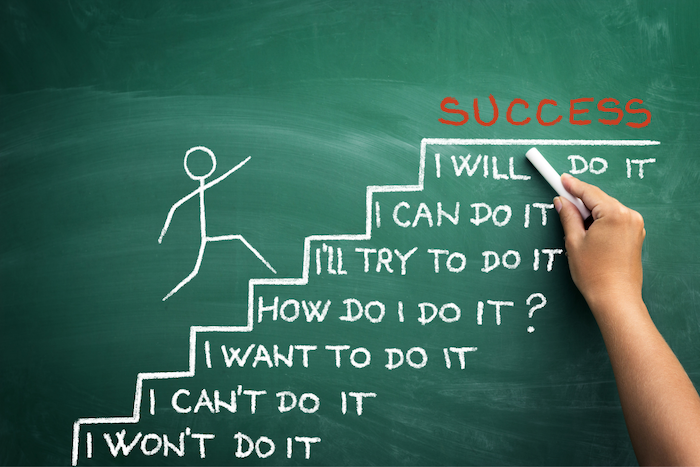
There’s nothing like the feeling of a job well done, especially when it comes to working out. A good sweat session can leave you feeling accomplished, energized, and proud of yourself.
But what’s the best way to reward yourself for a job well done? There’s no one-size-fits-all answer, but here are a few ideas to get you started.
First, try treating yourself to a healthy snack or meal. This will help your body recover from your workout and give you the energy you need to keep going. You could also try taking a relaxing bath or shower, or indulging in a favorite activity like reading or watching TV.
Whatever you do, make sure your reward is something that you’ll enjoy and that will motivate you to keep working hard.
Optimize your workout
You may be concerned about working out because you don’t want to overdo it and hurt yourself. Or maybe your joints and muscles are already sore and you’re not sure they can take the exercise.
If this is you, I know of something that can help. A highly researched compound, TONS of people swear by this.
The Top Antioxidant-Rich Foods For Beautiful Skin
Do you want to have beautiful skin? Of course you do! Who doesn’t?
Everyone wants to look their best, and one of the most important things for healthy skin is a good diet packed with antioxidants.
But what are antioxidants, exactly? And why are they so important for your skin health?
In today’s article, I’ll answer those questions and more. I’ll also cover the top antioxidant-rich foods you should be eating every day!
But first, let’s get one thing out of the way that will help you understand antioxidants better…
What are free radicals and how do they affect the skin?
Free radicals are molecules in the body that have an unpaired electron in their outermost orbital. This gives them an unstable, reactive configuration that causes them to “steal” electrons from other molecules in order to become stable. The resulting molecule is now a free radical itself, and the process continues in a chain reaction.
These unstable molecules go on to cause damage to cells and organs, a process referred to as oxidative stress.
While free radicals can be produced naturally by the body, an abundance of them are generated by external sources such as pollution, UV radiation, poor diet, and cigarette smoke.
Although some believe a small amount of free radicals are necessary for good health, an excess of free radicals can lead to cell damage and premature aging.
Because free radicals have a highly reactive molecular structure, they can be very damaging to the skin. These radicals can attack other molecules in the skin, causing inflammation and tissue degradation. They can also attach to DNA and cause mutations or damage to cell receptors, leading to various skin conditions such as wrinkles, sagging, or worse.
In order to prevent free radical damage, it’s important to take preventative measures by protecting your skin from UV rays and other environmental toxins like smog or smoke.
This may all sound bad, but there is a way to help clear out the free radicals in your body…
Antioxidants.
What are antioxidants and what do they do for your skin?
At its most basic, an antioxidant refers to any compound that can help fight off oxidative stress in the body. This stress can result from a number of environmental and lifestyle factors, such as exposure to pollutants, unhealthy diets, and high levels of stress.
Antioxidants work by neutralizing harmful free radicals in the body, thereby protecting cells from damage and reducing the risk of various diseases. In addition, antioxidants can help improve the skin’s overall appearance by boosting collagen production and reducing inflammation.
Some common antioxidants include vitamins C and E, carotenoids, polyphenols, flavonoids, and others. Whatever their source, antioxidants are essential for promoting long-term health and wellbeing.
If you’re looking to keep your body functioning at its best, while boosting the health of your skin, a great way is to eat plenty of antioxidant-rich foods.
Now, let’s take a look at some foods that contain the highest amounts of antioxidants!
The top antioxidant-rich foods you should be eating every day
Not only can the foods below help boost the levels of antioxidants in your body, they’re delicious and can be easily added to your diet!
Blueberries – Blueberries are rich in a type of flavonoid called anthocyanins, which have powerful antioxidant and anti-inflammatory properties. These little berries are also packed with vitamins C and E, as well as carotenoids.
Strawberries – Like blueberries, strawberries are also full of antioxidants. In addition to anthocyanins, strawberries contain ellagic acid, which can protect against UV damage and skin cancer.

Spinach – Spinach is a nutrient-dense leafy green that is high in vitamins A, C, and E, as well as carotenoids and flavonoids. These nutrients and antioxidants work together to protect the skin against free radical damage and inflammation.
Tomatoes – Tomatoes are a great source of lycopene, an antioxidant that has been shown to reduce the risk of skin cancer. They are also high in vitamins A and C, as well as flavonoids.
Nuts – Nuts are a great source of healthy fats, vitamins, and minerals. They are also high in antioxidants, including vitamin E and selenium.
Seeds – Seeds are a nutrient-dense food that are packed with antioxidants, vitamins, and minerals. Some of the best seeds for antioxidant content include sunflower seeds, pumpkin seeds, and chia seeds.
Tea – Tea is rich in antioxidants, including catechins, flavonoids, and polyphenols. These antioxidants have been shown to protect the skin against damage from UV rays, pollution, and other environmental toxins.
These are just a few of the many foods that are high in antioxidants. By including these foods in your diet, you can help to protect your skin against free radical damage and keep your overall health in tip-top shape!
How do free radicals and antioxidants affect collagen levels?
Collagen is a key structural protein found in the skin, tendons, and bones. It helps to give these tissues their strength and elasticity. But can free radicals affect collagen?
Unfortunately, yes.
One of the main ways that free radicals can damage collagen is by breaking down its component amino acids. This process, known as protein oxidation, can weaken collagen fibers and make them more susceptible to damage.
Free radicals can also inhibit the production of new collagen fibers, resulting in a loss of tissue elasticity.
In addition, free radicals can promote the formation of harmful chemicals called Advanced Glycation End-products (AGEs). These chemicals can further damage collagen fibers and contribute to the visible signs of aging.
Antioxidants’ ability to neutralize free radicals helps to prevent collagen damage and keep the collagen fibers strong. In addition, antioxidants promote collagen synthesis, a process that is critical for maintaining skin elasticity and preventing the appearance of fine lines and wrinkles. By promoting normal collagen production, antioxidants can help keep the skin looking supple and youthful.
How else do antioxidants help the skin?
Antioxidants are thought to also play a role in reversing some signs of aging, such as dark spots or thinning hair.
As we age, our cells gradually become less efficient at repairing damage. This leads to the visible signs of aging, such as wrinkles, fine lines, and age spots. Antioxidants are believed to reverse this process by stimulating the production of new cells and protecting existing cells from damage.
Overall, it is clear that antioxidants play an important role in keeping the skin looking vibrant and radiant.
Help your skin get back on track
As you can see, free radicals can wreak havoc on our bodies and deplete our collagen levels.
Fight back by providing your body with highly absorbable collagen that can help your body rebuild the collagen fibers it needs to maintain healthy skin, joints, hair, and more.
The Reasons Your Hair May Be Falling Out: HEREDITARY
Welcome to my final piece on the reasons one may experience hair loss. The thing I want most is for you to be able to take some control in case your hair begins to thin or fall out. I know how it can feel to be losing more and more hair with no idea why.
Today’s article involves a cause of hair loss that’s certainly more frustrating because it can feel like it’s completely out of your control.
Genetics.
Though mostly thought to only affect men, this type of hair loss – typically just referred to as baldness – can happen to women too.
But it’s not all bad news. Though genetics can play a role in determining how much hair you’ll lose as you age, other factors play a role as well. As such, there are things you can do to mitigate this loss and maximize your hair growth potential.
The “balding gene”
Though both men and women can be affected by this type of hair loss, it manifests differently in each.
Male pattern baldness typically begins as an m-shaped recession at the front of the scalp. This often begins by age 30, with about 80 percent of men experiencing male pattern baldness by age 80. [1]
Female pattern baldness tends to begin later, typically following menopause. Generally, this manifests as a recession along the part of the hair. By the time they reach the age of 80, around 50 percent of women will experience women pattern baldness. [2]
Androgenetic alopecia is the medical term for this type of baldness. And when it comes to hair loss, it’s the most common cause.
Is it caused by genetics?
Researchers estimate that genetics accounts for about 80 percent of male pattern baldness. [3]
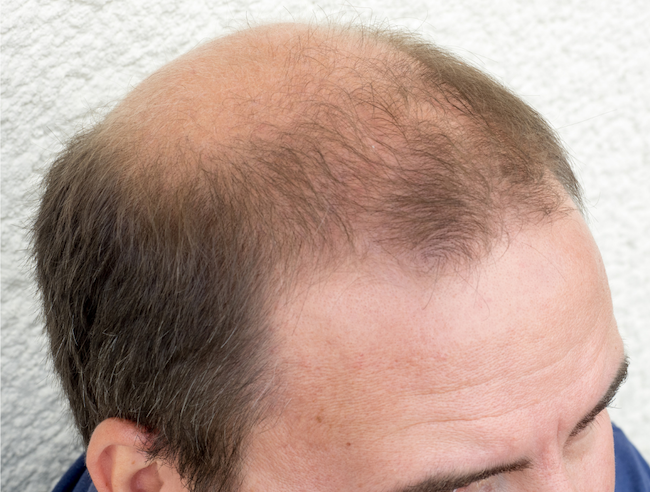
But that brings me to a myth you may have heard before…
Many people claim that men inherit the gene for balding from their mother’s father and that – if that grandfather was bald – you will also go bald. There is a bit of truth to this, but it’s been taken a bit out of context.
In reality, the genetic component of male pattern baldness involves more than one gene. While one of these genes is inherited from your mother, and it has been found to double the risk of developing male pattern baldness, 63 other genes play a role in baldness. But only 6 of them come from your mother. [4, 5]
Research has found that more than 80 percent of people who have experienced balding had a father who also lost their hair. [6]
When it comes to female pattern baldness, it is still not fully understood how genetics play a role. However, experts theorize that hormones are a component, which would explain why so many women experience hair loss after menopause. [7]
How to slow hair loss
Unfortunately, hair loss as the result of genetics is difficult to avoid and thought to be permanent once it begins.
However, there are things you can do to mitigate its progression.
Healthy lifestyle habits – Eating a balanced diet, sleeping well, managing stress, and routinely exercising will not only support overall health, but the health of your hair.
Medications – If your hair loss is due to genetics, certain medications may help. Coming in the form of both creams and pills, these work by either strengthening hair follicles or preventing things that can damage them.
Hair transplant surgery – Results and types of surgeries vary, but typically this is where healthy hair follicles are taken from somewhere else on the body and transplanted to the bald or thinning areas.
Own it – If you’re losing hair because of genetics, it’s not your fault. From movie stars to models, there are plenty of people who rock hairless heads. Find a style or look that suits your look best and own it. Remember, those who mind don’t matter and those who matter don’t mind!
The bottom line
By far, genetics is the most common and natural cause of hair loss. But the good news about it is that – unlike many other causes of hair loss – it doesn’t signify an underlying health problem.
This article concludes my series on the many causes of hair loss. If you’re experiencing hair loss, I hope that this has helped you find some answers to why you may be losing your hair.
You can read my journey from thinning to thick hair by clicking here.
Did you miss any of the articles in this series?
In case you didn’t catch all six articles in this series, I want to link the others below so they’re easy to find!
Just click the title of the article you want to read and enjoy!
The Reasons Your Hair May Be Falling Out: STRESS
The Reasons Your Hair May Be Falling Out: DIET
The Reasons Your Hair May Be Falling Out: SCALP HEALTH
